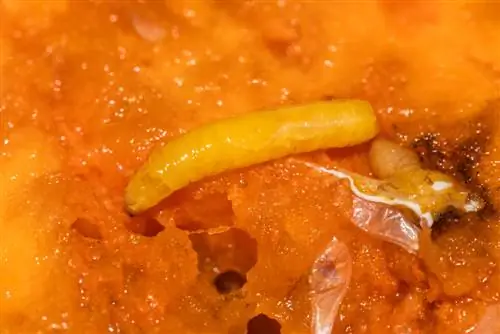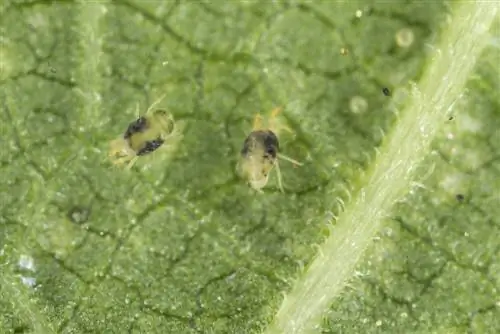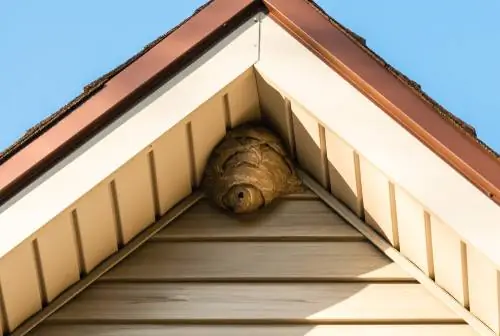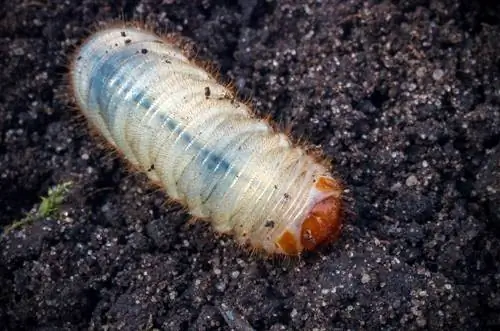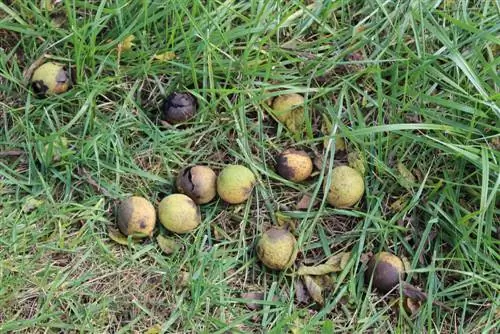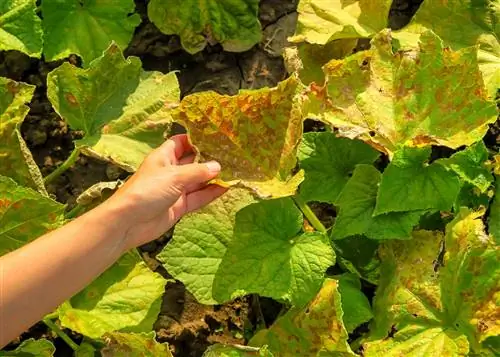- Author admin [email protected].
- Public 2023-12-16 16:46.
- Last modified 2025-01-23 11:22.
Maggots are an annoying thing, especially when they attack crops that have been nurtured and raised with dedication. We give you a brief overview of the most common types of maggots that can be a problem for hobby gardeners.
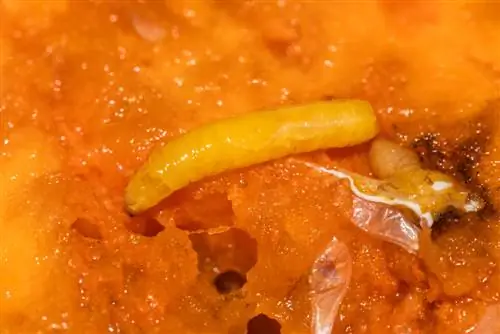
Which types of grubs often appear in the garden?
Common grub species in gardens are the cherry fruit fly, walnut fruit fly, cherry vinegar fly and fungus gnats. They attack cherries, walnuts, fruit and ornamental plants, cause fruit maggots and root damage and can cause crop failure.
Definition of maggots
First of all, a brief definition and distinction: Only the larvae of dipterans, which primarily include many species of flies, are called maggots. Relevant for hobby gardeners and (partially) self-sufficient people because the following species are more common among the types of fruit and vegetables that can be cultivated in this country, as well as ornamental plants:
- Cherry fruit fly
- Walnut fruit fly
- Cherry vinegar fly
- Sad gnats
Cherry fruit fly
The cherry fruit fly, as the name suggests, primarily attacks cherries, for example sour cherries, honeysuckles or bird cherries. She lays her eggs on the ripening fruits between May and early July. The hatching maggots feed on the pulp around the core, causing the fruit to begin to rot and fall off prematurely.
Walnut fruit fly
The walnut fruit fly was introduced from the USA and primarily attacks walnuts. Their flight and mating season extends from June to September. Mated females lay up to 15 eggs in the pericarp of a nut, from which the hatching maggots then feed and develop. The nut itself is only indirectly affected by the undersupply.
Cherry vinegar fly
The cherry vinegar fly is also a pest immigrant. It originally comes from Southeast Asia and is a fruit fly. The reddish-brown colored fly attacks a wide range of fruit with thin skins, such as sweet cherries, peaches, plums, grapes, nectarines, figs and many types of berries. The females lay 1-3 eggs per fruit. The damage caused by maggot damage manifests itself in dented, soft spots on the fruit.
Sad gnats
Sad gnats are particularly relevant for ornamental plants, especially those grown indoors. The maggots actually cause damage to fungus gnats too. The small, black, delicately built mosquitoes themselves are annoying at best because they swarm when the plants are moved or watered. The animals lay their eggs in the soil; moist, humus-rich soil is preferred. The maggots that hatch inside eat both dead plant material and the roots of living plants. This can especially kill young plants such as seedlings and cuttings.

